Item information
- Added by
- Wyville
- Views
- 14,226
- Watchers
- 8
- Comments
- 1
- Reviews
- 4
- Last update
- Rating
- 4.50 star(s) 4 ratings
-
Moondrop MIAD01 5G HiFi Mobile Audio DeviceThe first smartphone developed by Moondrop.
-
FiiO M23Despite its name, the FiiO M23 Portable Audio Player is not positioned as the new flagship model...
-
Cayin N3UltraThe N3Ultra is Cayin's latest Gen 3 Tube DAP, equipped with two JAN6418 vacuum tubes and...
-
iBasso DX260 Digital Audio PlayeriBasso DX260 - DAP with Octa DAC-chip Matrix and easy replaceable battery.
-
Lotoo MjolnirLotoo Mjölnir High-End All-In-One Portable Audio System
-
Violectric DHA V380Violectric DHA V380 DAC, Headphone Amp and Pre-Amp
-
FiiO EM5FiiO EM5-Beryllium-coated Dynamic Driver Earbuds
-
FiR Audio M4FiR Audio M4, 4-driver hybrid IEMs
-
Lotoo PAW 6000Reference Portable Hi-Fi Audio Player
-
TP Audio AuroraSingle BA (C)IEMs
You are using an out of date browser. It may not display this or other websites correctly.
You should upgrade or use an alternative browser.
You should upgrade or use an alternative browser.
FiiO M11 Pro
- Added by Wyville
- Create date
Latest reviews
Takeanidea
Headphoneus Supremus
Pros: Sound. Looks. Not mega expensive.
Cons: 1 card slot. No google play store. Lots of competition at this price point.
FIIO M11 PRO V FIIO M11 – THE NAKED TRUTH

 The Fiio M11 in action
The Fiio M11 in action
Hi to you all. Dillan and I having just come back from the Bristol Hi-Fi Show have made some new friends and have reacquainted ourselves with some of our long term pals.
Advanced MP3 players joined forces with our friend Mark Ramos, of HiFiMan. Mark provided some bling in the AMP3 room on the 2nd floor at the Marriot Hotel, adorning the tables with Ananda BT, HE1000SE, the very new Deva, and the Sundara headphones.
I knew both Mark and Chris from amp3. They have been in the audio business since 2001. We have met for short chats at various shows. Over the course of the Friday and Saturday, Team Subjective formulated a plan to both push our output up and put amp3’s huge collection of portable kit firmly on the map.
It seemed like I had just set foot through the door of Team Subjective’s offices and a large parcel was waiting for me. Let us now waste no further time and tear open said packaging!
YouTube offering from my alter ego – Headphones HiFi Reviews
By the time you have worked your way through the above video I hope you will have a fairly good idea of what Subjective Reviews believe to be the most important aspects of a Digital Audio Player. There are technical aspects in respect of the M11 which I have not dwelt on. This is for very good reason. Time is short. Each minute I witter on for leaves the potential for you, dear viewer, to lose interest and become distracted by far less important things, like doing the washing up, or feeding the cat etc. So I have to tread lightly. Is 23 minutes as brief as I could make it? I hear you cry! Well, this is my legacy, of course, and I want it to have some kind of depth.
 The author with the most expensive headphones in the World, the HiFiMan Shangri- La, and Mark Ramos of HiFiMan in the background
The author with the most expensive headphones in the World, the HiFiMan Shangri- La, and Mark Ramos of HiFiMan in the background
The technical stuff; as I see it…. well, If I can’t hear the technical stuff happening, should I, or you, be concerned about it? I believe, quite passionately, that there is too much emphasis on specifications and not enough attention is paid to what the darn thing actually sounds like. I can look at oscilloscope diagrams as much as the next man. They’re fascinating. But then, I love to spend time sitting outside watching the weeds in my garden grow. Let’s have another nice picture of this DAP. I’ve hardly said anything about it yet!
 A tastefully fuzzy shot of the posh connections for balanced and unbalanced and USB-C
A tastefully fuzzy shot of the posh connections for balanced and unbalanced and USB-C
There are specifications that matter; of course there are. For me, when I was looking for a digital audio player and I was prepared to spend some serious money on it, storage was a really important consideration. I have Amazon Music HD too. Therefore, anything that I bought had to justify the subscription cost of Amazon Music HD and also had to house as close as possible the entirety of my music collection. Believe me; the number of CDs I own go into the 1000s. The Fiio M11 has 2 micro SD card slots and a sort of version of android. Fiio has an app store allowing Netflix, Amazon Music and Fiio Music to be installed and personalised. A few other apps needed apk download and installs. This is a bit hit and miss and is clearly inconvenient compared to having google play store on tap. There are plusses. I can bypass the Android OS music handling by using Fiio Pure Music Mode. I can also upscale all to DSD at the press of a button. The M11 Pro is sensible, and has retained exactly the same features.
 One of the few visuals that differentiates the Pro from it’s brother
One of the few visuals that differentiates the Pro from it’s brother
The M11 Pro has just the 1 SD Card slot. There were apparently some issues with Card Slot 2 when using some of the cheaper micro sd cards on the market. Overheating issues. I have san disk cards in mine and have never had any problems with them. However, the change has been made by Fiio and I doubt they will go back to engineering a DAP with 2 card slots. Such is life. Take it on the chin. Move on. Let us talk about the good bits. The sound quality. As promised, from my YouTube vid, I am going to provide you with 2 60 second soundbites made via the line in socket of my Olympus digital recorder. They are here, you can make up your own minds as to whether I am talking nonsense when I say I detect a difference in sound quality, for the better, in the Pro version.

https://drive.google.com/open?id=1yC3hz2PP4R7LfqZSvZa7zua7YKS2j2Bb
The M11 Pro Link is above
https://drive.google.com/open?id=1DC-TIqXOkKKQa0hdm8PigAazKg3EvA03
M11 link is above
Ok. We are all but done. A simple look at a couple of quite complicated pieces of engineering. For us, however, that doesn’t really enter into it. What we need to know is, does it fit our requirements? Is it gonna sound good? Will it last? Does it look good? And where do I sign? Well, the last question is more about how much is it gonna cost me and can I get it real quick? Thankfully, the questions above have all been handled by your trusty subjective reviewer. No thanks are necessary; I do this for the love


Hi to you all. Dillan and I having just come back from the Bristol Hi-Fi Show have made some new friends and have reacquainted ourselves with some of our long term pals.
Advanced MP3 players joined forces with our friend Mark Ramos, of HiFiMan. Mark provided some bling in the AMP3 room on the 2nd floor at the Marriot Hotel, adorning the tables with Ananda BT, HE1000SE, the very new Deva, and the Sundara headphones.
I knew both Mark and Chris from amp3. They have been in the audio business since 2001. We have met for short chats at various shows. Over the course of the Friday and Saturday, Team Subjective formulated a plan to both push our output up and put amp3’s huge collection of portable kit firmly on the map.
It seemed like I had just set foot through the door of Team Subjective’s offices and a large parcel was waiting for me. Let us now waste no further time and tear open said packaging!
YouTube offering from my alter ego – Headphones HiFi Reviews
By the time you have worked your way through the above video I hope you will have a fairly good idea of what Subjective Reviews believe to be the most important aspects of a Digital Audio Player. There are technical aspects in respect of the M11 which I have not dwelt on. This is for very good reason. Time is short. Each minute I witter on for leaves the potential for you, dear viewer, to lose interest and become distracted by far less important things, like doing the washing up, or feeding the cat etc. So I have to tread lightly. Is 23 minutes as brief as I could make it? I hear you cry! Well, this is my legacy, of course, and I want it to have some kind of depth.

The technical stuff; as I see it…. well, If I can’t hear the technical stuff happening, should I, or you, be concerned about it? I believe, quite passionately, that there is too much emphasis on specifications and not enough attention is paid to what the darn thing actually sounds like. I can look at oscilloscope diagrams as much as the next man. They’re fascinating. But then, I love to spend time sitting outside watching the weeds in my garden grow. Let’s have another nice picture of this DAP. I’ve hardly said anything about it yet!

There are specifications that matter; of course there are. For me, when I was looking for a digital audio player and I was prepared to spend some serious money on it, storage was a really important consideration. I have Amazon Music HD too. Therefore, anything that I bought had to justify the subscription cost of Amazon Music HD and also had to house as close as possible the entirety of my music collection. Believe me; the number of CDs I own go into the 1000s. The Fiio M11 has 2 micro SD card slots and a sort of version of android. Fiio has an app store allowing Netflix, Amazon Music and Fiio Music to be installed and personalised. A few other apps needed apk download and installs. This is a bit hit and miss and is clearly inconvenient compared to having google play store on tap. There are plusses. I can bypass the Android OS music handling by using Fiio Pure Music Mode. I can also upscale all to DSD at the press of a button. The M11 Pro is sensible, and has retained exactly the same features.

The M11 Pro has just the 1 SD Card slot. There were apparently some issues with Card Slot 2 when using some of the cheaper micro sd cards on the market. Overheating issues. I have san disk cards in mine and have never had any problems with them. However, the change has been made by Fiio and I doubt they will go back to engineering a DAP with 2 card slots. Such is life. Take it on the chin. Move on. Let us talk about the good bits. The sound quality. As promised, from my YouTube vid, I am going to provide you with 2 60 second soundbites made via the line in socket of my Olympus digital recorder. They are here, you can make up your own minds as to whether I am talking nonsense when I say I detect a difference in sound quality, for the better, in the Pro version.

https://drive.google.com/open?id=1yC3hz2PP4R7LfqZSvZa7zua7YKS2j2Bb
The M11 Pro Link is above
https://drive.google.com/open?id=1DC-TIqXOkKKQa0hdm8PigAazKg3EvA03
M11 link is above
Ok. We are all but done. A simple look at a couple of quite complicated pieces of engineering. For us, however, that doesn’t really enter into it. What we need to know is, does it fit our requirements? Is it gonna sound good? Will it last? Does it look good? And where do I sign? Well, the last question is more about how much is it gonna cost me and can I get it real quick? Thankfully, the questions above have all been handled by your trusty subjective reviewer. No thanks are necessary; I do this for the love

Pros: Excellent sound. Pretty good battery life. Supports streaming apps and can offline music on many of them. Both 4.4 and 2.5mm balanced included. Good bluetooth and digital transport.
Cons: One fewer micro SD card slots than the M11. No plastic case (like the M11). No Google Play Store, so some apps wont run or can't be purchased. Minor issues with screen touch sensitivity near the edges.
With the regular M11 taking the portable audiophile world by storm with its sound quality and features, the M11 Pro, with THX tech built in was a surprise too soon. However with the better DAC (AKM4497) and better amp (THX88) the penalty was a larger battery with worse overall battery life, and the loss of one of the two micro SD card slots. However, if sound quality is your priority, I reckon the M11 Pro brings true high-end portable sound in well under $1000. See my video for a full run-down of the device and my listening impressions.
M
mwr2700
Thanks for the excellent review Amos. I've had the M11 Pro for a little under two weeks now. It's my first portable dedicated music player and I've been enjoying the sound tremendously. Fortunately I haven't had issues with edge sensitivity that you pointed out and hopefully it doesn't develop into a problem.
Demo3
You did not say anything about MQA?
leviathan2210
Great review ! It's gonna be my first DAP XD. Can barely wait for it to arrive
DarKu
Reviewer at Soundnews
Pros: Futuristic design, great material selection and attention to detail
- Fastest response times of any DAP
- Advanced GUI that is easy to use and navigate
- Widest soundstage in a DAP, amazing depth and airiness
- Great tonal balance across the board
- Great Bluetooth codec support
- Excellent micro-detail levels
- Super clean and transparent sounding
- Extended frequency-response
- Noise-less headphone out, works great even with sensitive IEMs
- Among the fastest transient response in a DAP
- Great price to performance ratio!
- Fastest response times of any DAP
- Advanced GUI that is easy to use and navigate
- Widest soundstage in a DAP, amazing depth and airiness
- Great tonal balance across the board
- Great Bluetooth codec support
- Excellent micro-detail levels
- Super clean and transparent sounding
- Extended frequency-response
- Noise-less headphone out, works great even with sensitive IEMs
- Among the fastest transient response in a DAP
- Great price to performance ratio!
Cons: Still no Google Play Store support
Without too much fanfare on 30 July of this year (2019), FiiO dropped the bomb and announced their latest and greatest M11 PRO DAP in a Facebook post. To this day, that one was the most commented post in FiiOs history and a clear message that people were genuinely excited about that one. Besides dual AK4497EQ flagship DAC chips, M11 PRO promised to be the world’s first DAP with dual THX-AAA-78 headphone amplifier modules. If you checked my latest reviews around here you probably know how much I love THX designs for their accuracy and honesty in delivering a clear and unaltered signal to every headphone. At the end of the day I am using daily a Benchmark HPA4 as my flagship desktop headphone amplifier and that says a lot about me and my tastes.
To say that I was genuinely interested in hearing one for myself would be a big understatement, I contacted multiple times the local distributor, the manufacturer itself and literally begged for a listening session. It seems that demand for M11 PRO was much bigger than the production time, FiiO was unable to keep up with the rising demand but it seems that everything calmed down lately and I’m glad I was given the opportunity to test this one for a longer period of time.
FiiO is not new to this game, they already developed the world’s fastest DAP, the M11 and have enough experience with THX headphone amp modules as they released the AM3D/C amp module for Q5, Q5S and X7 MKII that is based on THX circuitry. M11 PRO is an evolution of both M11 DAP and THX headphone amp modules and presents itself in a single, compact unit. I present to you the M11 PRO digital-audio-player.

Unboxing Experience
M11 PRO comes in a thick double box as an extra protection measure. Opening it up, the DAP screen is covered by a big FiiO Smart Hi-Res Music Player sticker, the same was applied on M11 and if I remember correctly I’ve seen similar stickers on other brands. Underneath it a small metal pin is located; this one will open the MicroSD card slot. In a smaller box you will find a USB Type-C cable and a 3.5mm to coaxial adapter cable. In a bigger box you’ll find all the paperwork like the user manual, a quick start guide and some notes on using Bluetooth enabled devices. I noticed that FiiO didn’t include a clear case with M11 PRO, that was included in the M11 box. According to FiiO, the clear case for M11 PRO was difficult to manufacture, their quality control level was not met and they just abandoned the idea of making one. However, some manufacturers moved quickly and released their own cases for the M11 Pro. DD HiFi released their C-M11 Pro leather case and if you care dearly about your investment, then I strongly recommend getting one. If you are against leather products, you can opt for a clear TPU case for it that can be found all over Ebay. I hope FiiO will release a case for it too, SK-M11 was quite nice and a SK-M11 Pro would heal the wounds of that clear case fiasco.
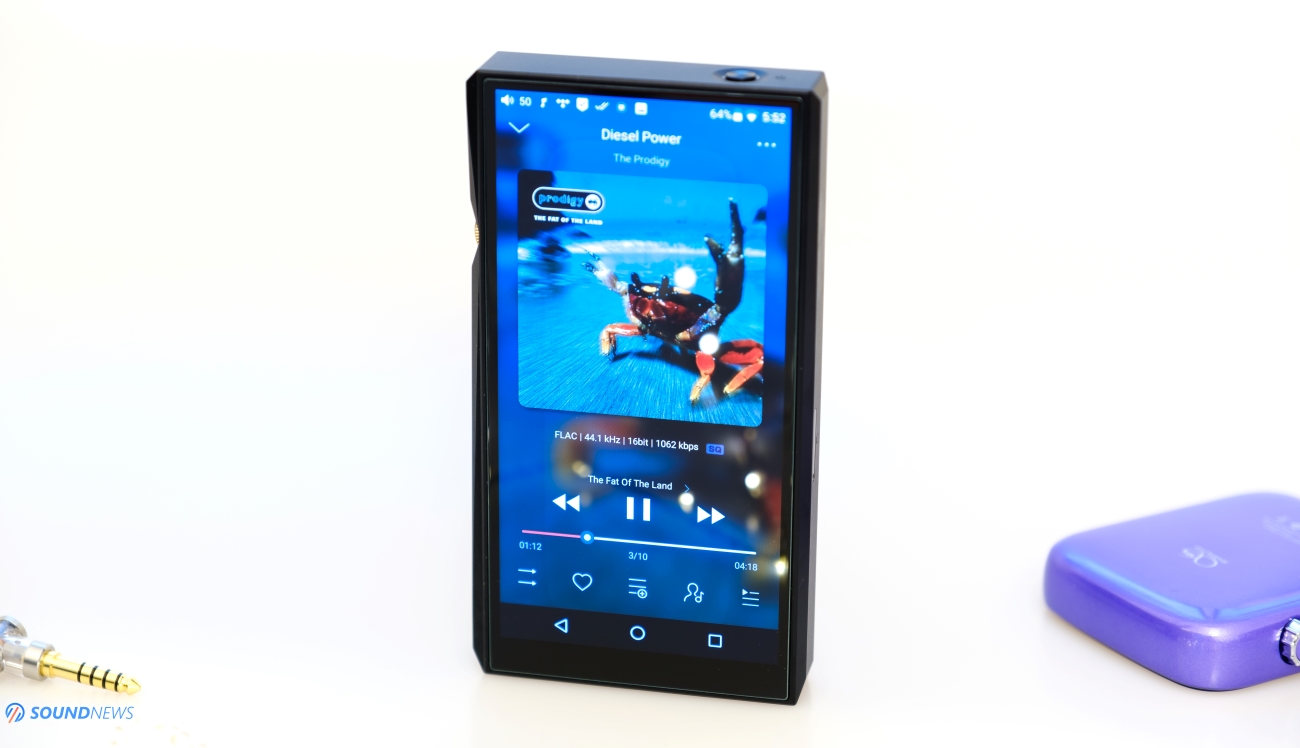
Design & Build Quality
I was already impressed by M11 so I am having the same feelings about M11 PRO. It is a beautiful machined aluminum device, it looks impressive and has that high-end feel to it. It has huge glass sheets on the front and back, very much in line with newest smartphone trends, I mean my phone also has glass on the back. M11 PRO has again that fiber glass look on the back and those small things like Hi-Res Audio, Hi-Res Audio Wireless, THX and AAA-78 laser engraved logos underneath the glass are adding a touch of proudness and they really deserve to be about this one. It’s a unique DAP in every single way. It feels great in the hand and it is quite balanced too. Compared to M11 it is just by 1mm thicker to accommodate a bigger battery inside, it has a golden PRO logo on its left side and has only a single MicroSD card slot instead of two slots on M11, more about this decision in a minute.
As with M11, M11 PRO has great tolerance numbers and nothing is wobbling around, all the buttons have a firm press, the golden volume wheel is turning smoothly, it doesn’t stick out and will not turn itself in a jeans pocket, I already tested that.
I like how it looks and I like how it feels in the hand, the build quality is really top notch and it left a great first impression on me.
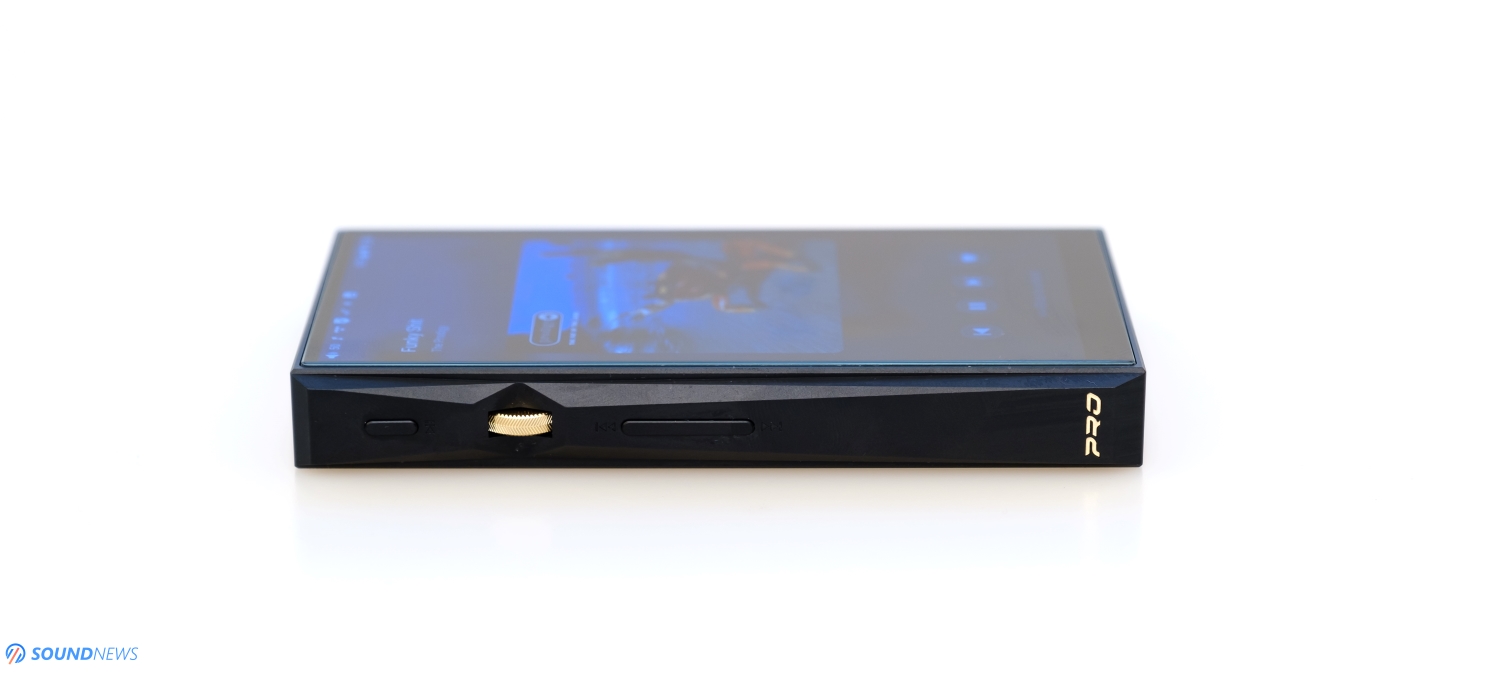
Buttons & Layout
FiiO didn’t ruin this one with buttons on every side (do you still remember first generation X7 and its buttons? I still have bad dreams about those) and you will find most of them on its left side. There’s a Play/Pause, Previous and Next track buttons and a volume wheel. On top is your standby/On/Off button and on the bottom, you will find a trio of headphone outputs: a normal 3.5mm single ended output and two balanced outputs coming in 2.5mm and 4.4mm flavors. The USB Type-C works for data transfer, for charging or for using it as an external DAC for your PC/MAC or even for your OTG enabled smartphone.
The biggest drawback of M11 PRO compared to M11 was the decision to drop the second MicroSD card slot. FiiO clearly stated that this SoC is not working perfectly with 2 MicroSD cards and decided to drop one of them. On the plus side, M11 PRO supports the biggest capacity MicroSD cards and in time it will support even newer generation of cards up to 2TB in size.
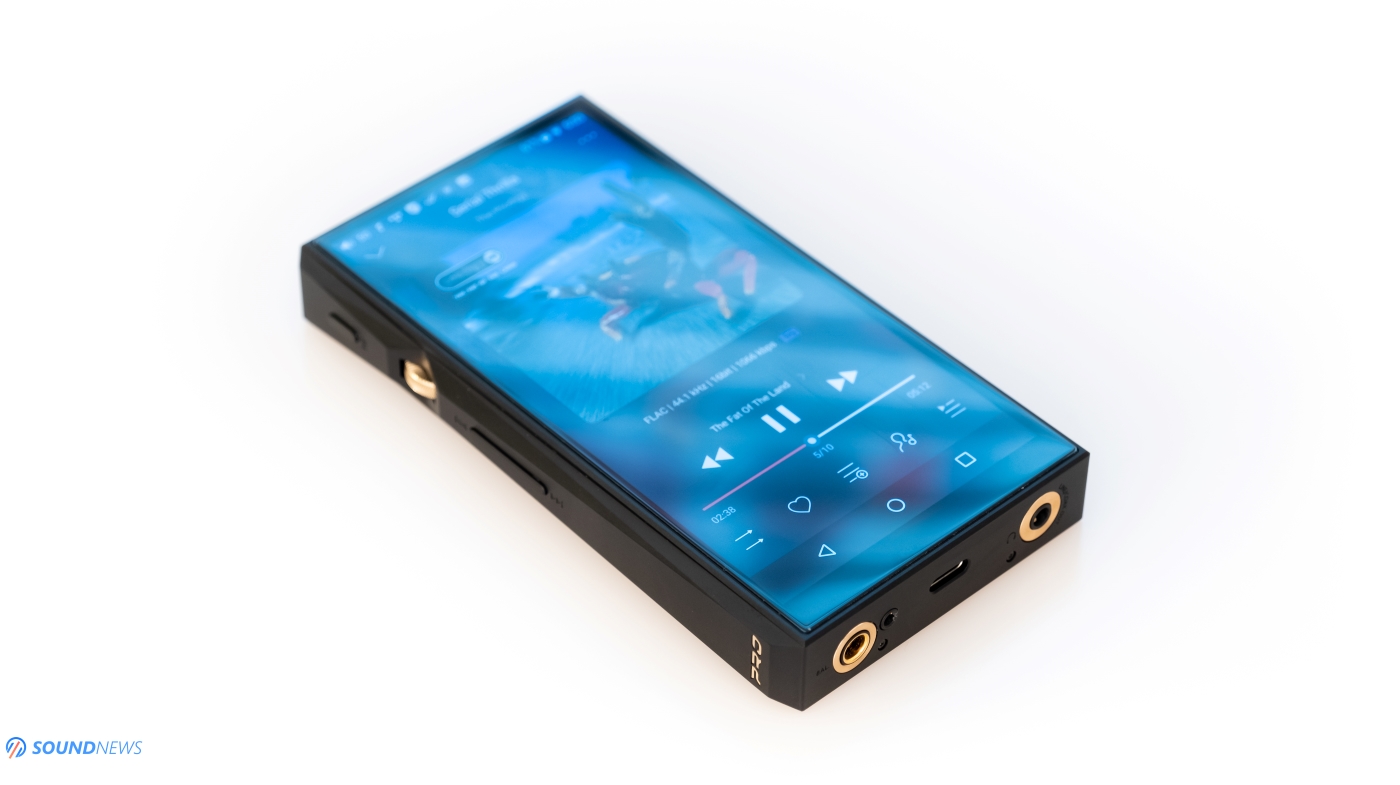
Display
FiiO used the same big 5.15” IPS multi-touch display that is almost bezel-less and very pretty to look at. Gone are those ugly chins and all that is left is a colorful and high-quality display. Contrast is quite good, blacks and whites are nice, so are those nice viewing angles. Image quality is nice thanks to that high pixel count and resolution. It is basically the same screen with the same 18:9 aspect ratio that M11 DAP has. Due to a high PPI, the final image is crisp and my cover albums are looking vivid and crystal clear.
I think a DAP doesn’t need a bigger display than this, I want its battery to feed that digital and analog circuitry, not a huge display size and pixel count. For gaming and Youtube needs I will always use my smartphone and M11 PRO will just remain for music listening only.
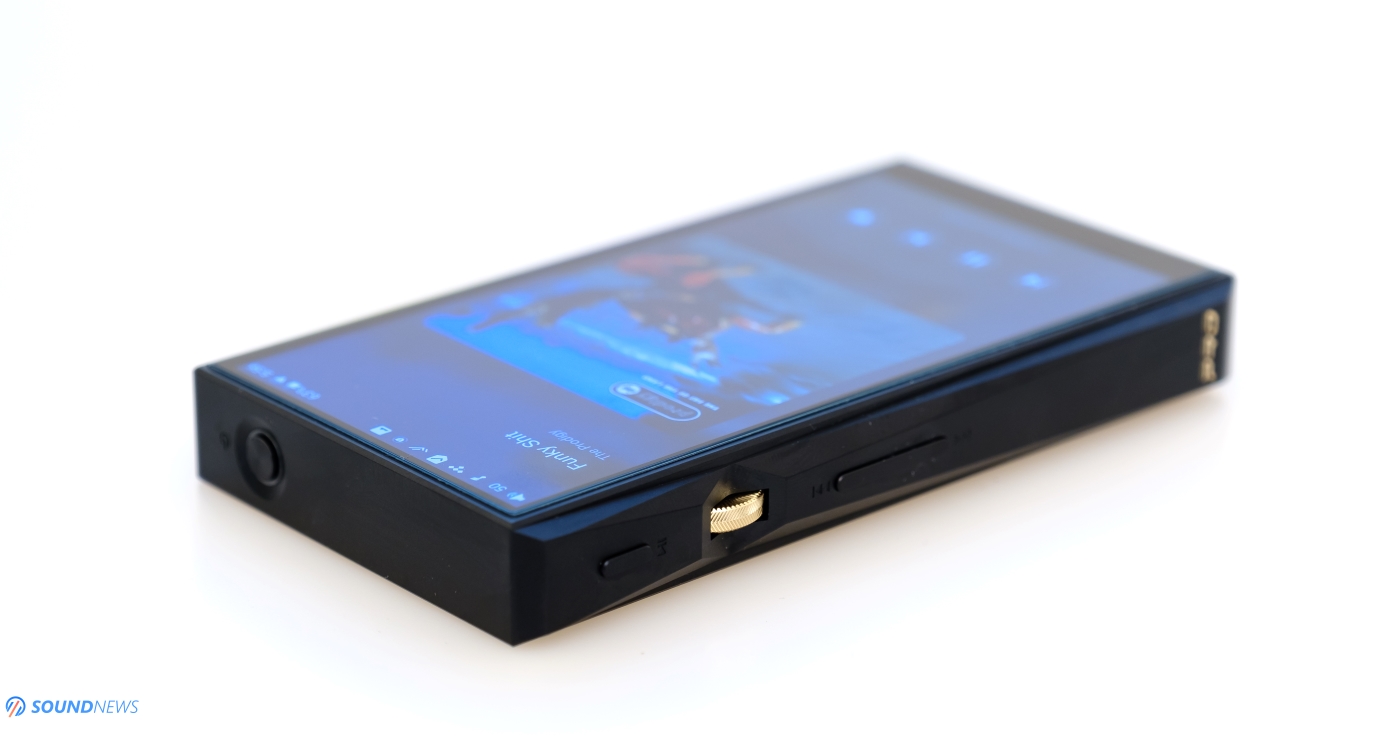
Battery
FiiO went with a bigger battery on this one. This is the sole reason it is thicker by about 1mm compared to the regular M11. Battery capacity increased from 3800 mAh to 4370 mAh but the actual battery life dropped from 13 to 9.5 hours on the 3.5mm jack because two AK4497 DAC chips and those THX-78 amp modules are using much more battery power compared to the ones inside the regular M11. With M11 PRO you are sacrificing a bit of battery life in exchange for higher quality sonics.
Do you still remember that M11 can go into deep sleep mode for 50 frickin’ days? M11 PRO by comparison goes lullaby for 55 days! Previous DAPs by FiiO slept much less than that so again we have a sleeping champ right here. Forgot your M11 PRO DAP for a month in your backpack? Wake it up and it will still have more than 40% battery left for few albums.

Under the hood of M11 PRO
It rocks the same fast and reliable 6-core Exynos 7872 CPU that currently is the fastest one in any DAP at any price. RAM memory remained at 3 Gb and the built-in ROM memory increased from 32 Gb to 64 Gb so even without a MicroSD card you can store a decent amount of music. FiiO went with a lightweight and custom Android OS based on version 7.0
M11 PRO doesn’t support Google Play Store but has an Applications bubble, by accessing it you can download all your music streaming services including other apps like Bandcamp and SoundCloud. FiiO also offers a possibility to install any other 3-rd party apps market like APKPure or CoolApk from where you can install almost any 3-rd party app like Youtube, games and so on.
I have already downloaded my usual stuff like Roon, Tidal, Qobuz, Spotify and Deezer, all of them are launching fast without hiccups. Some of those apps that support offline play will work perfectly fine with it, I tested Tidal and I can listen to my downloaded content.
From dual AK4493EQ DAC chips on M11, FiiO went straight to the top by choosing a dual AK4497EQ setup, that on paper will offer a much better signal-to-noise ratio, dynamic range and a lower THD. To properly implement those two, some changes needed to be made so FiiO used an independent volume control chip and dual crystal oscillators to squeeze the best out of those. M11 by comparison doesn’t have them and when critically analyzing both, the difference becomes very clear.
Going forward to the analog stage, FiiO went again with a top-of-the-line solution that will not bottleneck its DAC performance, the THX AAA-78 modules inside have absolutely impressive specs and leaving the DAC doing its job without altering that analog signal. Power wise, M11 PRO is slightly more powerful on the single ended output, it offers 200mW into 32 Ω and 550mW in the same load on both balanced outputs.
Adding all those improvements on the digital and analog side resulted in a much lower total-harmonic-distortion, M11 PRO has it 3.5 times lower on the 3.5mm jack and 2 times lower on balanced jacks compared to M11. Noise floor almost halved compared to M11 for an absolutely pitch-black background.
FiiO incorporated a full-MQA decoder, it unfolds MQA files in 8X mode, however MQA files as of right now are supported only in FiiO Music app, meaning you will need to store all those MQA files on your card or internal memory. Tidal Hi-Fi will stream those MQA files but the full MQA unfold process doesn’t work with Tidal as of right now. FiiO stated that future firmware updates will be released to support full-MQA decoding on other third-party apps. I am using a full MQA equipped DAC at home and if you ask me, full-blown Hi-Res files are sounding a bit better to me and DSD files are sounding clearly better, so MQA is not that important, at least for me.
Wireless capabilities remained the same, M11 PRO supports 2.4 and 5 GHz Wi-Fi bands, plus all those fancy Bluetooth codecs. It can still work as a Bluetooth sender or receiver, as a sender (say to a wireless headphone) it can output SBC, AptX, AptX-HD, LDAC and HWA and as a receiver (receiving data from a smartphone for example) it accepts SBC and LDAC. Bluetooth is still at version 4.2 and not the latest 5.0, but with a pair of Sennheiser Momentum 3 and FiiO EH3NC I didn’t lose a beat while listening to music on the go. It paired amazing even with my KEF LS50W speakers and with few TWS earbuds the signal always remained strong and stable.
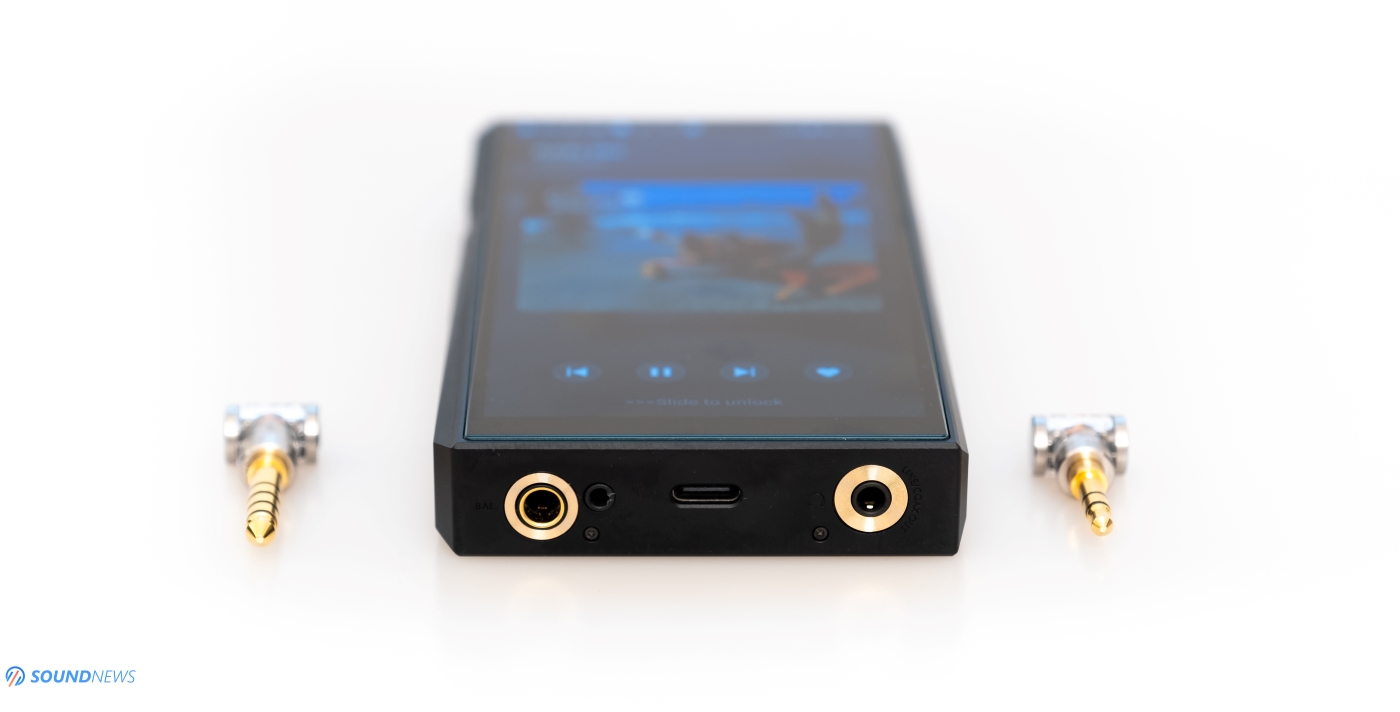
Graphical User Interface (GUI)
I already updated to the latest FW 1.0.1 and so far in a 2-week period it didn’t crash on me. In Android Mode it behaves like a typical Android device. Switching to Pure Music mode all apps will be automatically stopped, all background processes too and only FiiO Music app will remain open. This app was already updated multiple times and every singe time new features were added to it. I particularly like WiFi music transfer and FiiO Link which will let you control the M11 PRO (that sits in your pocket connected to some headphones) from the screen of your phone.
As with M11 and their previous DAPs, FiiO implemented a lot of shortcuts, lots of swipes in different directions will access some menus, will change its volume or other things, I recommend checking the Quick Start Guide that can be accessed from Technical Support bubble if you want to learn all of them. From there you can also check if a new firmware was released and for convenience, I recommended updating it via OTA (Over The Air).
On FW 1.0.1 GUI is polished and moves fast, I didn’t encounter stutters or slowdowns even when playing 32 bit Hi-Res files or DSD content. Streaming Hi-Res from Tidal Hi-Fi and then sending all that to a Bluetooth headphone is super simple and worked as a charm too, as much as I tried slowing it down, it didn’t happen so I have no complaints here.
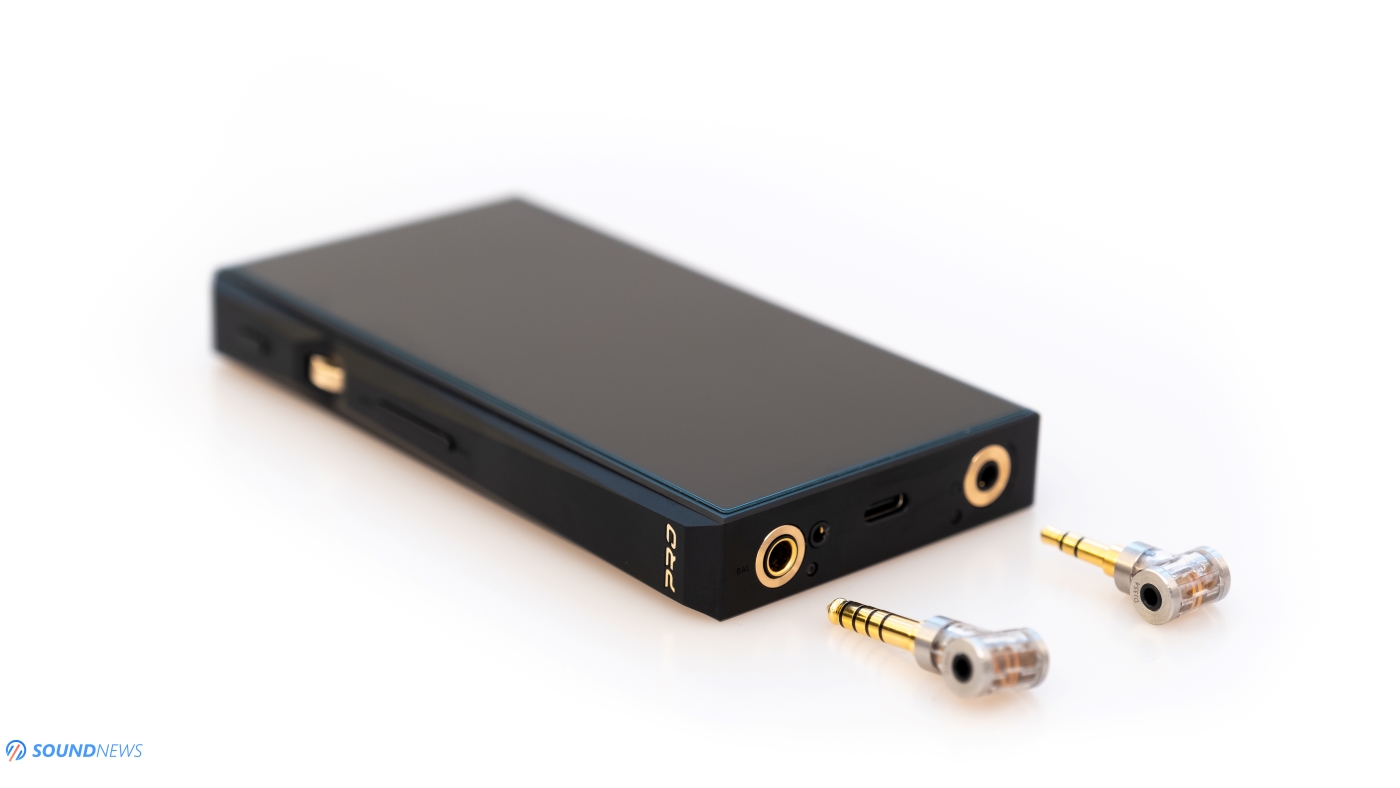
Sound Performance
I. Connected to sensitive IEMs
That super low THD and super low noise floor made a huge difference on M11 PRO. Every IEM I tested it with as FiiO FH7, FA7, Simgot EN700 PRO and many other lower tiered ones sounded ultra-crisp and grain-free. Background noise was nowhere to be spotted, just a pitch-black background even on high-gain with a maxed-out volume on both single ended and balanced headphone outputs! M11 in this regard was also silent, but not dead-silent like the newer one.
In terms of volume I never passed the 80 volume position out of 120 even on the 3.5mm jack on low gain with multi-driver IEMs. On the balanced jacks I cannot go higher than 65 volume position on low gain with the most inefficient IEMs. Headroom was huge and M11 PRO offered an incredible driver control. On some particular music the former M11 couldn’t offer a faster pace, an extended treble area and an ultimate diaphragm control. M11 PRO by comparison sounded like a really grown-up and serious device. Music is not only very detailed, crisp and precise, but also very tight, musical and engaging. Since all those IEMs don’t need that much power but an ultimate driver control to shoo away muddiness, M11 PRO sounded a lot like a stack of Topping D70 or Aune S6 PRO followed by a SMSL SP200 desktop headphone amp, I’m serious, M11 PRO sounds almost indistinguishable from a hi-fi desktop rig.
M11 had small quirks like a smoother than usual treble response and not the best slam and impact. M11 PRO is very different in this regard and will sound smooth only when the track is asking for this, otherwise it will be nimble, fast, articulated, with a good treble extension, it’s almost unreal that I am listening to a portable device.
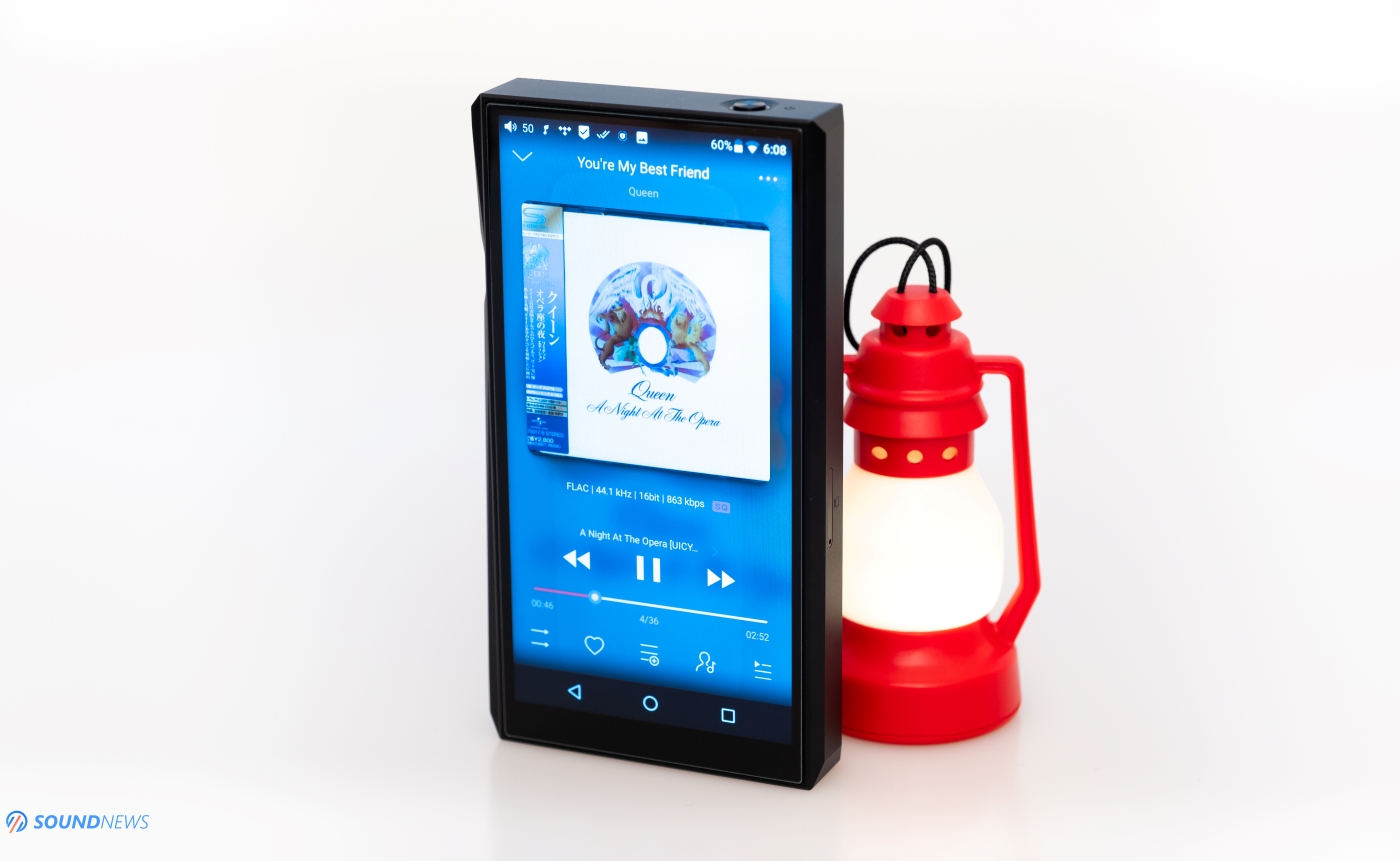
II. Connected to portable over-ear and on-ear headphones
You probably don’t use those anymore, but I’m old-school and I still love my portable and wired headphones. Especially Momentum range as Momentum 2 and 3 from Sennheiser, I recently included Erzetich Thalia in this section too, amazing headphones that sound great even from lower tier sources.
Some of you probably heard the Momentums by now and know that they have a “not quite my tempo” sound to them that is lean, slow, maybe even boring from low powered devices. M11 sounded quite fine with them and it didn’t really change them into something else. On M11 PRO on the other hand, I don’t really know what is to blame: that dual AK4497 setup, or those double crystal clocks or maybe those sexy THX modules, but Momentums opened-up and awoken from their deep sleep. They started sounding jumpy on me, fast and articulated, they sound like that mostly on desktop setups and yet here I am with M11 PRO in my hand looking surprised at it. Maybe everything as a whole made a bigger difference than all those things separately. M11 PRO improved Momentum 2 and 3 and made them faster, snappier and made them show more treble information.
Driver control was definitely among the best in a portable device, dynamics kicked-in in full-force and listening to some faster paced music a thought never left my mind: this sounds nor rushed, nor dragged, just right my tempo .
Volume wise, I never gone past 105 volume on the 3.5mm single ended output, even with harder to drive Erzetich Thalia, so again headroom was plenty enough even for -15 DR tracks.
Portable headphones, on-ears or over-ears, multi-driver IEMs and everything in between sounded as connected to a big, bad-ass desktop setup, so again, in my opinion M11 PRO sounds outstanding and above the rest.
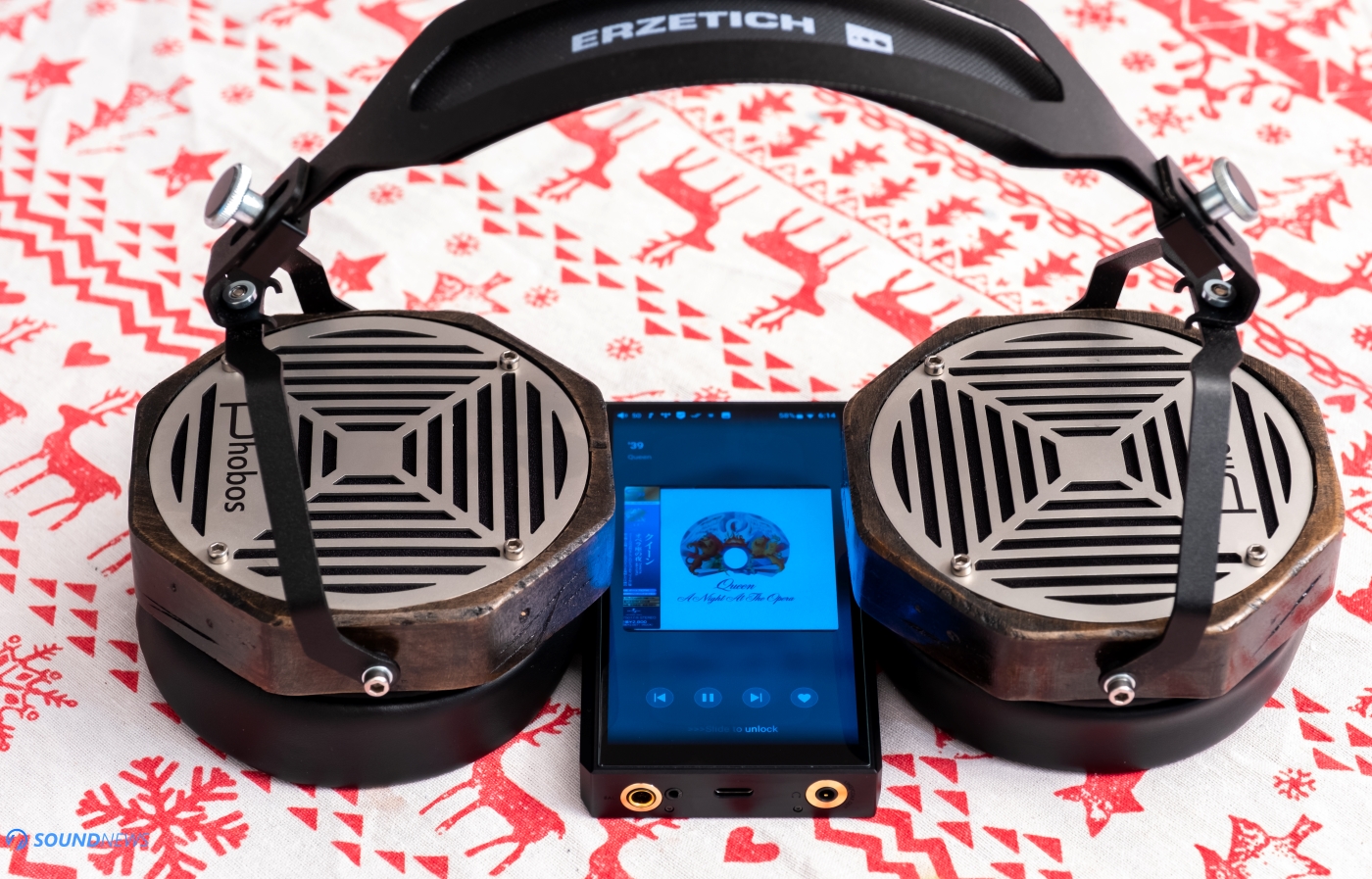
III. Connected to desktop low sensitivity headphones
First of all, M11 PRO wasn’t really made for desktop headphones but that doesn’t mean I can’t test few of them and I’m pretty sure this will be the funniest part of this review.
Instead of going with some simple dynamic desktop headphones, I thought: Hey, I should test some of the biggest headphones with the biggest ear-cups and drivers, so I plugged a pair of Erzetich Phobos into the single ended 3.5mm jack. This is a planar-magnetic headphone that eats current for breakfast, at only 45 Ohms and having a 106mm driver assembly, it needs some serious amperes to be driven even at normal listening levels. At 110 out of 120 volume levels, I am smiling and nodding my head, even on the 3.5mm jack M11 PRO was more than capable of driving them almost to their fullest. I said almost because it had everything from the home desktop rig except for that lightning fast transient response and control that only a wall-powered desktop headphone amp can provide. Anything else, like details, transparency, dynamics were pretty much there, even frequency extremes were very present and clean without a hint of dryness.
Moving on to another planar-magnetic headphone – Quad Era-1, those worked even better, at 105 volume they sounded much closer to my desktop setup and everything just clicked into place, dynamics were definitely better this time around and transient response as well. I am going to search for a 4-pin XLR female to 4.4mm Pentaconn male adapter so I could test all my desktop headphones on the 4.4mm balanced out of M11 PRO but I presume everything will sound even better and much closer to a reference desktop system.
Switching to Hifiman Arya it was clear that 3.5mm jack can’t provide enough power and those sounded fine but limited in terms of dynamics, those were right but not explosive as I like them to be, Arya under-performed on it.
Connecting a pair of HD660S from Sennheiser was an easy task for it since at about 100 and up to 105 volume those already sounded too loud even for my tastes. HD660S had enough headroom and sounded really holographic and open wide, almost indistinguishable from a desktop reference setup.
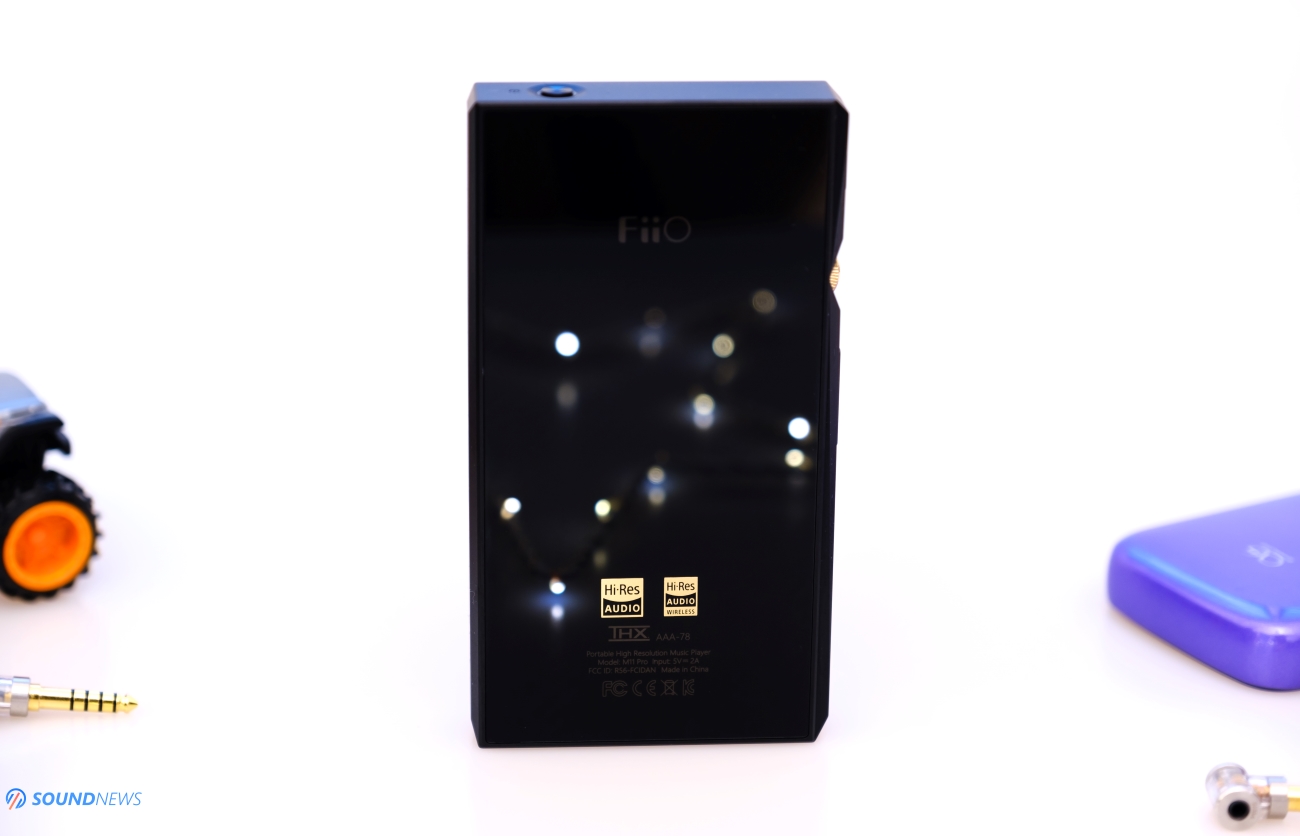
IV. Connected to Wireless headphones and speakers
My KEF LS50W worked wonderfully with it, I was streaming Tidal Hi-Res content from M11 PRO to LS50W at few meters away, even from another room BT connection always remained stable and strong. No complains here as my speakers sounded exactly how I know them.
Moving on to the EH3NC Wireless headphones by FiiO, that was an excellent pairing since in FiiO Music app there is a feature that is called Bluetooth Device Control, if you go there you will be unleashing the full potential of EH3NC and a lot of settings can be synced wirelessly to them as EQ, Power Off timers, battery and codec indicators and other things. EH3NC had a stable connection too, when I went outside for a 2-hour walk with M11 PRO in my pocket I never lost a beat with EH3NC and all I heard was just a stable and worry-free performance.
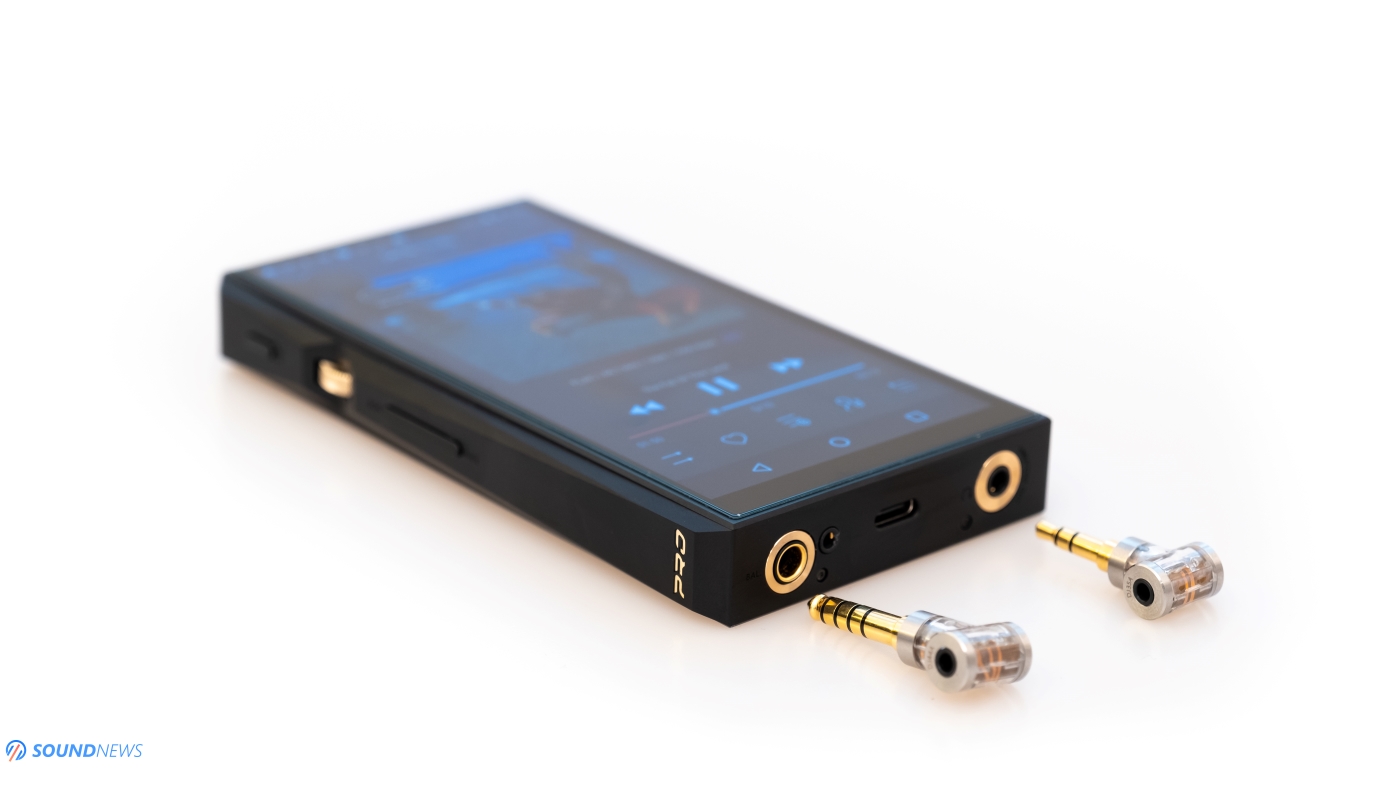
V. Soundstage size & Depth
I can’t hold this anymore so I will just mention from the start that up to this moment, M11 PRO presented for me the widest soundstage size I’ve heard in a DAP. M11 and X7 MKII (especially with AM5, AM3B and with AM3C) sounded quite open and wide but not on the same level with M11 PRO.
This big change was felt mostly with high quality IEMs and with desktop headphones. In this regard M11 PRO sounds really like a desktop DAC attached to a desktop THX amp, it sounds wide spread and open. Very much so, that some might find that distracting at times. It grabs my attention a lot and while listening to M11 PRO I can’t multitask in front of a computer, that air flying around is so easily spotted, as all musical notes are wrapped in bigger air bubbles and I feel like I’m drawn to them wondering between each and every note. M11 PRO is against forwardness, muddiness, up-front presentations and chooses to somehow unfold everything for the listener. I personally like this effect but I know few persons that don’t, so it really depends on the listener.
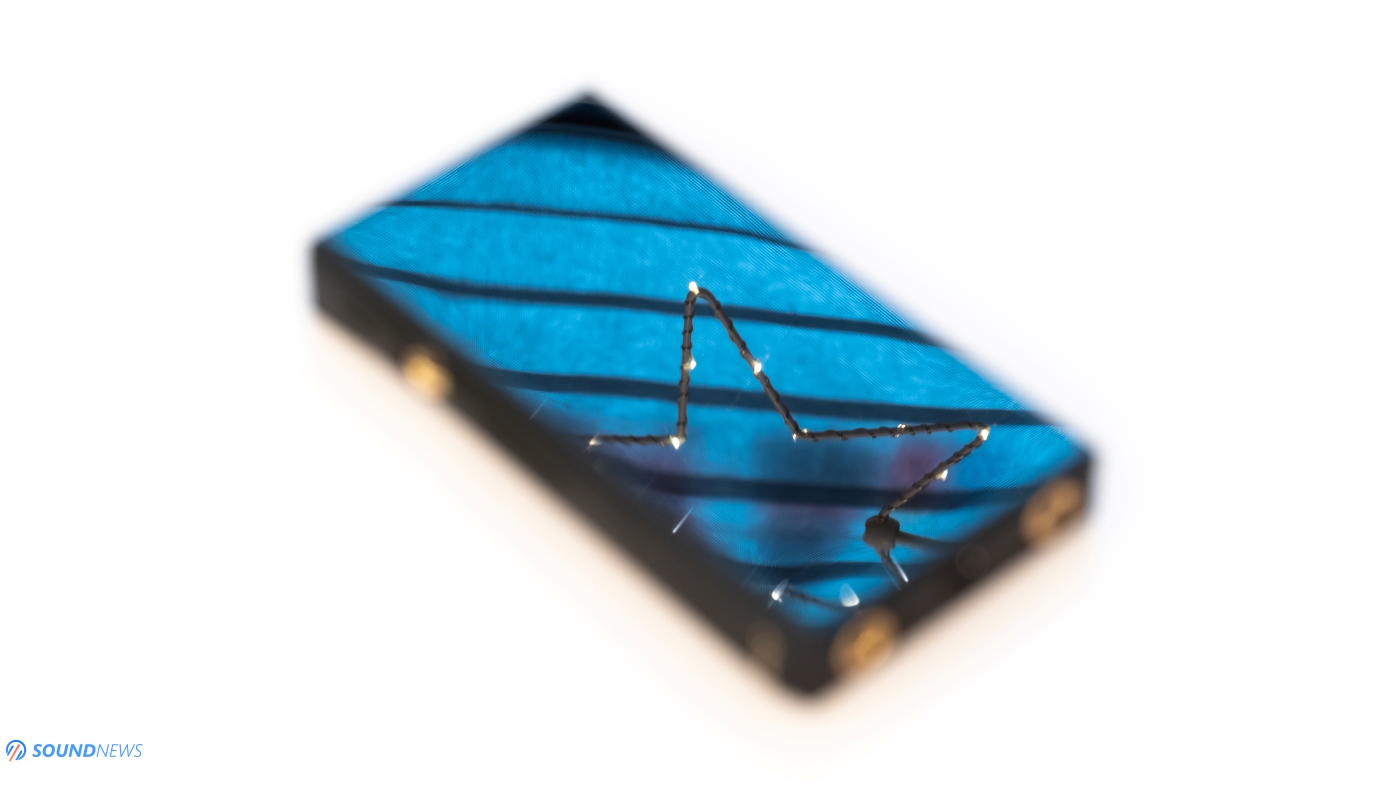
VI. Transient Response
I don’t want to sound overly positive with this one but if you ever heard a THX headphone amplifier (here’s a comparison between 3 desktop THX amps) you probably know that those are all about fast transients, about slam and impact and M11 PRO is really not that different.
The second biggest change to the regular M11 is actually the speed, impact or transients as I call them. M11 PRO is all about acceleration, speed, it wants to slam your eardrums like drumsticks onto your brain. If M11 was a bit laid back, calm, smooth and relaxed, M11 PRO is all about nerve, it can have an aggressive character (if the track is asking for it), it opted for a faster decay in detriment of a longer one.
When I think about it, M11 will be smooth sounding most of the times, even with faster paced or aggressive music. M11 PRO on the other hand can be smooth and gentle too, but also aggressive and mean if the track is like that, the latter one works with a wider variety of music and M11 is not.

VII. Detail Retrieval & Transparency
This is where I felt another improvement compared to the regular M11. I spotted additional micro-details not only in top-quality recordings but even with my older rock records I can spot an additional layer of information, there is just a bit more to hear and feel. I can walk easier between those notes with M11 PRO and I feel that with M11 there are more bumps down the road. M11 PRO is transparent sounding and offers and impressive level of detail retrieval. If am omitting the power limitations of M11 PRO compared to a desktop setup, it sounds like a grown up and serious DAC. It reminds me a lot about the DAC section of Aune S6 PRO and of Topping D70 - both are amazing units at their price points. Higher tiered DAC chips, those THX modules and higher quality crystal clocks surely helped a lot and I’m glad that M11 PRO can stand on its ground and be compared to desktop DAC units without a hitch.
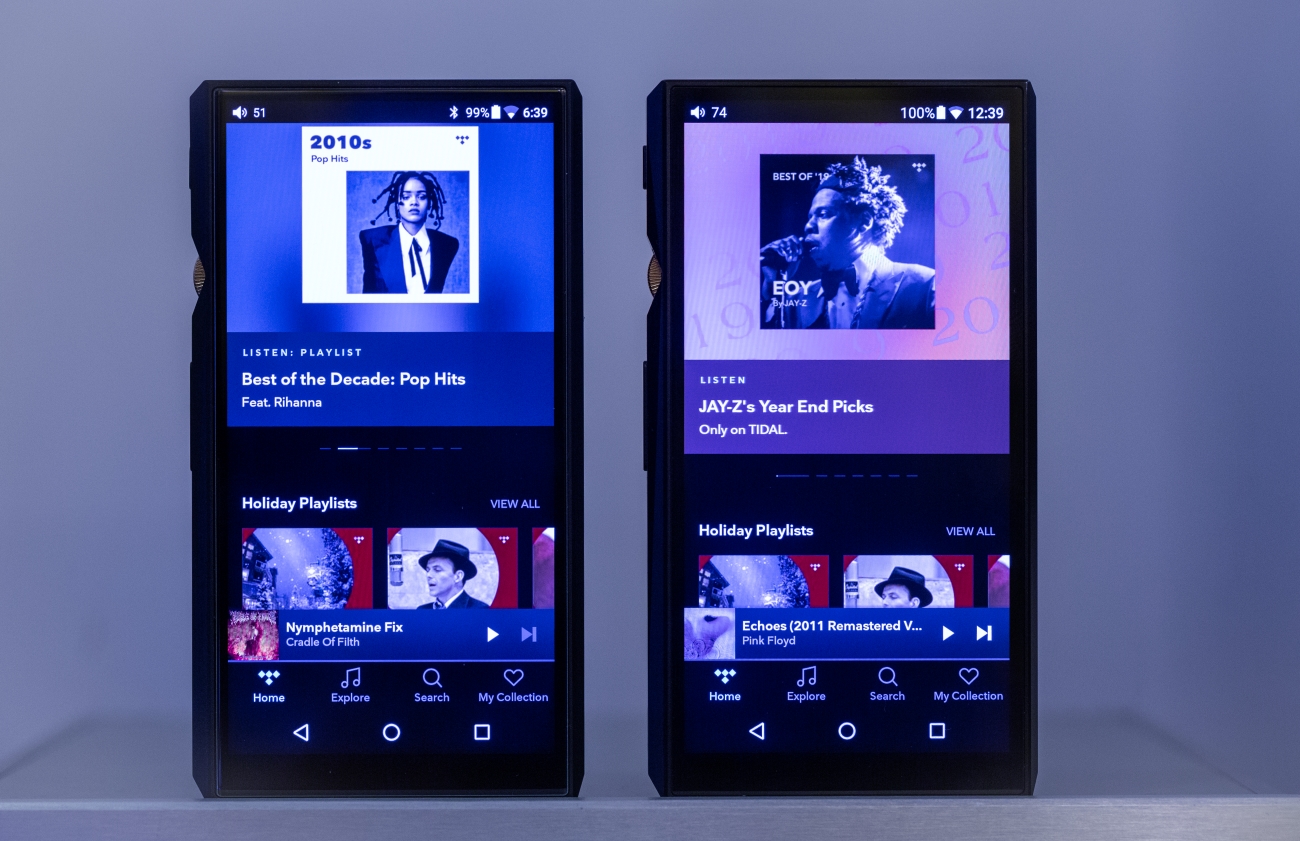
VIII. Frequency Response
FiiO achieved a good tonal balance on this one by marring a musical digital-to-analog converter with a super precise and revealing headphone amp. By doing that they actually solved the limited frequency extremes of the regular M11.
As a result, the biggest improvements on M11 PRO are the sub-bass and the upper treble region where everything is just tighter and better defined. M11 PRO has a really good sub-bass section and it can reveal information even down to 20 Hz. Listening to The Prodigy – Invisible Sun at the 0:41 mark the bass goes really low, it rumbled the drivers of FH7 and ERA-1 and that didn’t happen on normal M11. It goes deep, has a good sustain and slams quite well for such a small device. It is never overdone and doesn’t steal the show, this is still not bass-head material. This is a reference sound and as such M11 PRO is quite neutral from bottom to the very top. Mid-bass is very well defined, very present, quite pleasant and has an analogue-ish presentation. What I really liked about it, is that bass information presents itself as clean, layered and not as a super warm, boomy or overdone.
That toxic AKM midrange is still there and still has that up-lifting vibe to it. Is sounds full-bodied and maybe by a hair warmer than my reference setup. The only part of FR where I feel there is a longer decay is the midrange area. M11 PRO chooses to tickle my years with a soul-grabbing performance and everything from voices, pipes, strings and piano has a natural texture to them. I can feel those notes as carrying more air and more weight and sincerely I kind of like it this way as midrange is my favorite frequency area.
Treble was probably improved the most compared to regular M11 as I hear a much better outline of those hi-hats and a much clearer drum-pedal. On M11 those notes were softer and much shorter somehow and on M11 PRO you can feel their start and their end. I can easier analyze my music on M11 PRO and be confident that I am losing close to nothing on it as it has a much wider frequency response and a better control of every note.
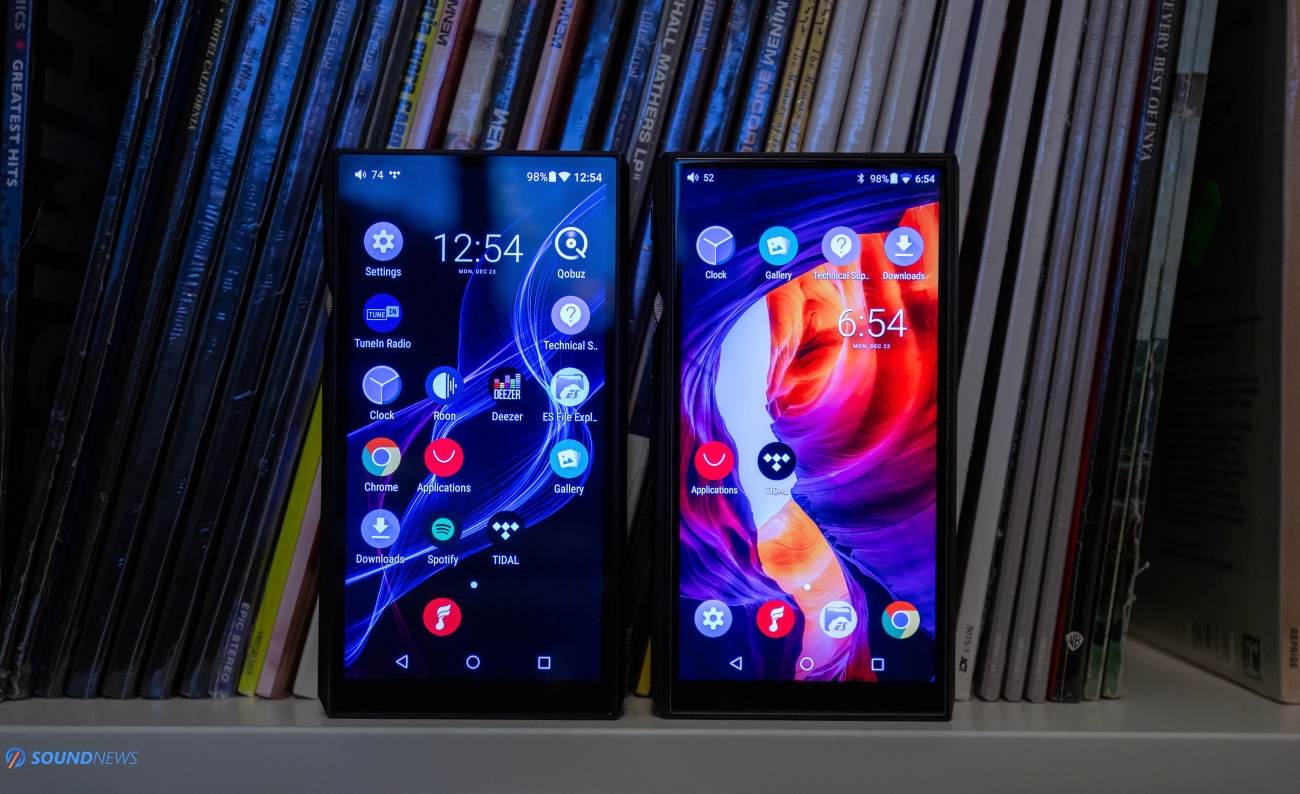
Comparisons
My whole review reads like a big comparison between M11 and M11 PRO so I will just summarize everything in a smaller chapter.
FiiO M11 ($449.00) VS FiiO M11 PRO ($649.99)
I will skip all the specs, features and so on as I already mentioned them before and will just go directly to the sound comparisons.
M11 is an amazing DAP and at that price point has little to no competition at all. It sounds great but sometimes can sound smoother, leaner and not that engaging. In terms of transient response M11 is Okay but not impressive, it will not slam a lot and will not deliver a quicker presentation. Double-drums are sounding like a single-drum setup, cymbals don’t have sustain and will not tickle your ears. M11 loses a bit of treble and sub-bass information. If you listen to higher quality recordings it becomes much more apparent and distracting at times. Bass is decently layered and goes pretty low too, but will never rumble and will never offer some goose-bumps.
M11 PRO sounds like an improved M11 in every single way. First of all, it is faster in its presentation, so everything will be delivered in an instant, it kicks and slams a lot better. Bass punch is back and will offer goose-bump inducing moments, it is very pleasing to hear an additional bass layer and more information down there. It just goes lower, has a better sustain and impresses a lot more.
Midrange is the only area where I felt that both devices are sounding very alike and both have a warm-ish tint to them, musical somehow, they carry more air and everything feels weightier and full-bodied. I love this part a lot on both devices. Treble is a BIG step forward on M11 PRO, as it’s more extended and even past 16 kHz it will show additional details (if you can pick them). Combine a faster pace with an extended treble area and it is clear that a double-drum will sound like an actual double-drum setup, cymbals crashes have the right amount of texture without becoming bothersome and bright. M11 PRO just offers me more and I see it as a complete package. I am very confident with it and I can rely on its performance every time I press play.
The biggest question: Are those extra $200 worth it? You should ask that yourself but to me it is worth every single penny. If you look at competing devices, $649.99 will offer you an entry level device or maximum a midrange device with a mediocre performance.
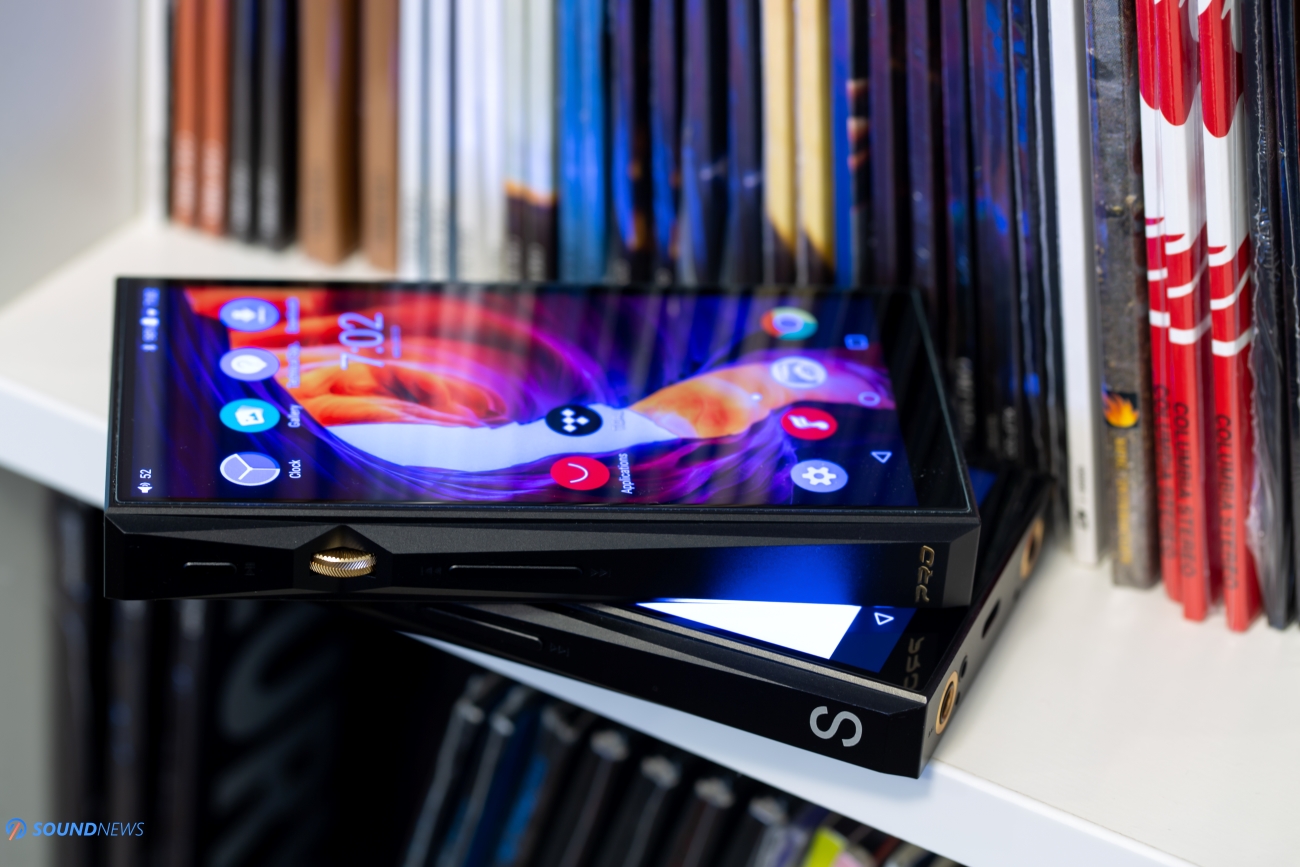
Conclusions
M11 PRO looks, performs and sounds like a high-end DAP to me. It has the fastest CPU at the moment of any DAP, has a beautiful machined aluminum body and some impressive specs to boot that only FiiO implemented so far. I’m glad that FiiO had the guts and courage to try new things as implementing those THX modules and I hope their extra-work will be repaid back. It’s time for FiiO to be a trendsetter and it’s time for others to observe how a DAP should move, sound and cost.
I know FiiO is really proud about this one as they just decided to make a limited run of M11 PRO Stainless Steel of just 1500 units worldwide so act fast if you want to reserve one for yourself.
Oh, one more thing, DAP days are not over yet, not yet!
PROS:
- Futuristic design, great material selection and attention to detail
- Fastest response times of any DAP
- Advanced GUI that is easy to use and navigate
- Widest soundstage in a DAP, amazing depth and airiness
- Great tonal balance across the board
- Great Bluetooth codec support
- Excellent micro-detail levels
- Super clean and transparent sounding
- Extended frequency-response
- Noise-less headphone out, works great even with sensitive IEMs
- Among the fastest transient response in a DAP
- Great price to performance ratio!
- Still no Google Play Store support
- Sources: Xiaomi Mi9T Pro, Corsair One i160
- DACs: Matrix Audio Element X, KECES S3, Burson Conductor 3
- DAPs: FiiO M11 PRO, M11, M5, Shanling Q1
- Headphone amps: Benchmark HPA4, Kinki Studio THR-1
- IEMs: FiiO FH7, FA7, Simgot EN700 Pro & others
- True Wireless earphones Creative Outlier Air, Hifiman TWS600
- Wireless headphones: Sennheiser Momentum 3 Wireless, FiiO EH3NC
- Portable headphones: Sennheier Momentum 2, Erzetich Thalia
- Full-sized headphones: Erzetich Phobos, Hifiman Arya, Quad ERA-1, Sennheiser HD660S
- Loudspeakers: KEF LS50W
- Interconnects: QED Reference XLR, Aune AL3 XLR
- Power Cables: Isotek EVO3 Premier (x2)
- Balanced Power Conditioners: PLiXiR Elite BAC 400, KECES BP-600
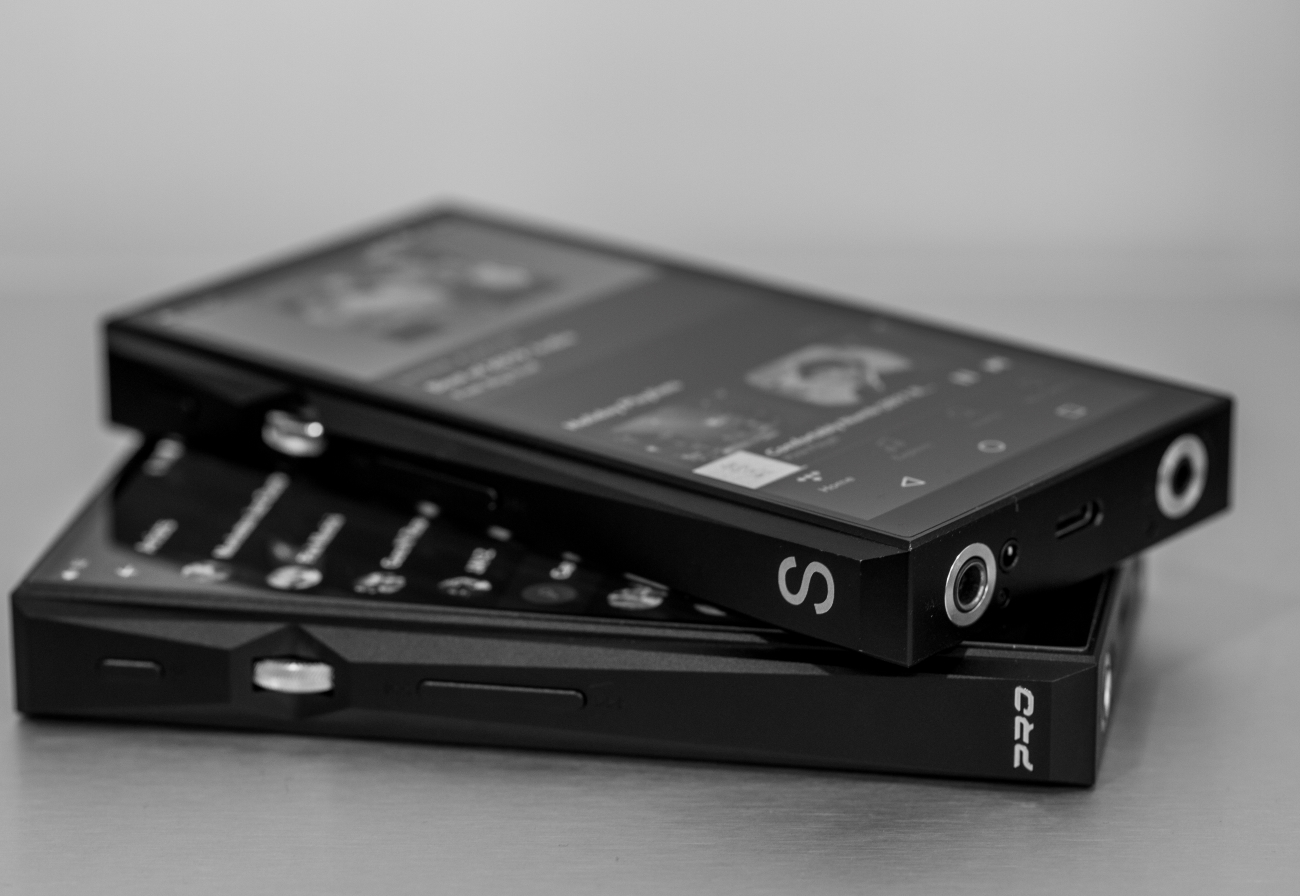
Overall score 95/100
Cat Music
It would be interesting to try the ibasso dx220 with amp8, to know the difference between both Daps in sound quality, thanks!
phara0hseye
I really appreciate your review. I like the focus on describing the sound signature as per your ear and tastes. While purely subjective, it is useful. Nicely done.
Comments
EmPathWalker
100+ Head-Fier
Right at the top of my priority list of questions is, Would it GPS track me and share that data anywhere at all ?




